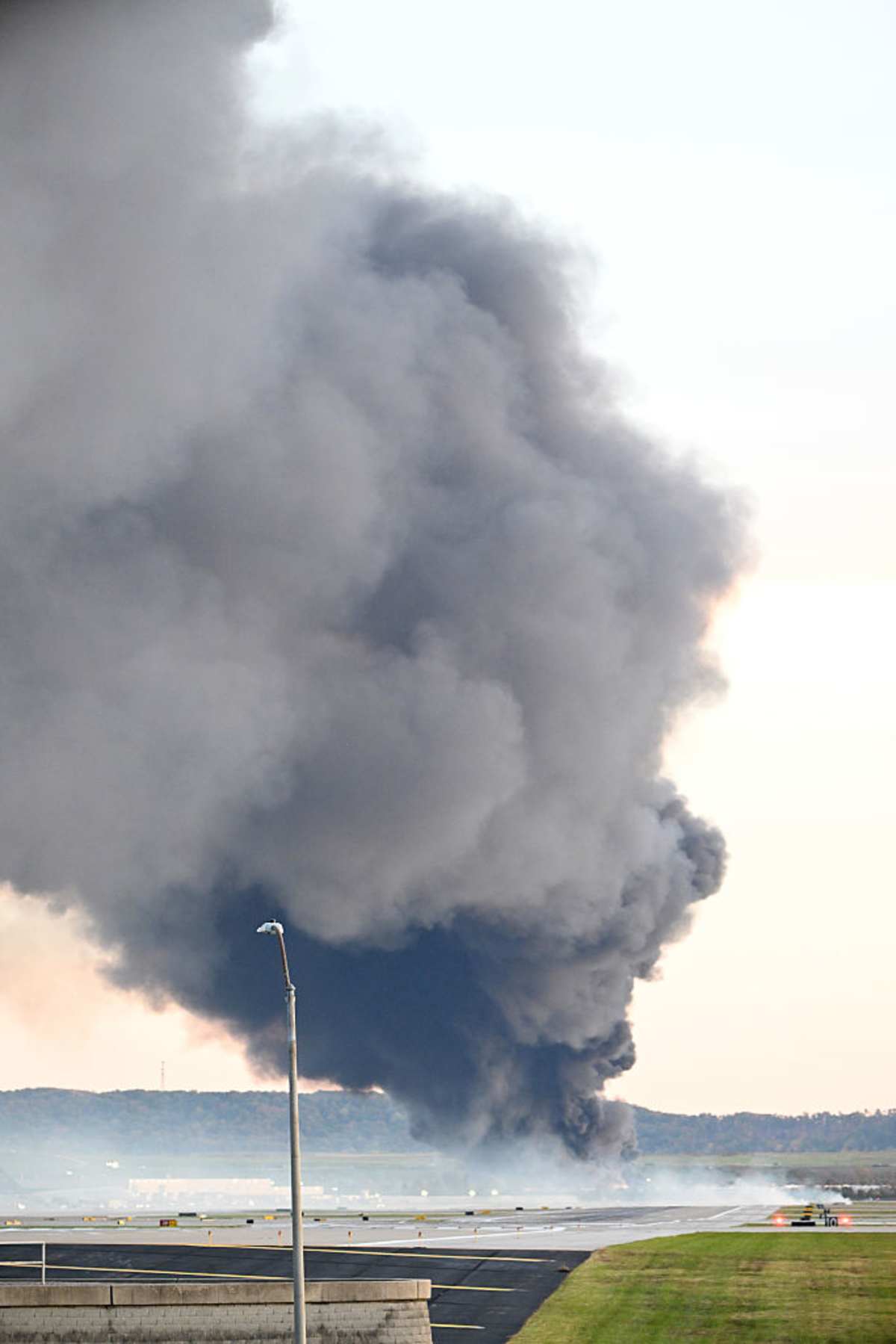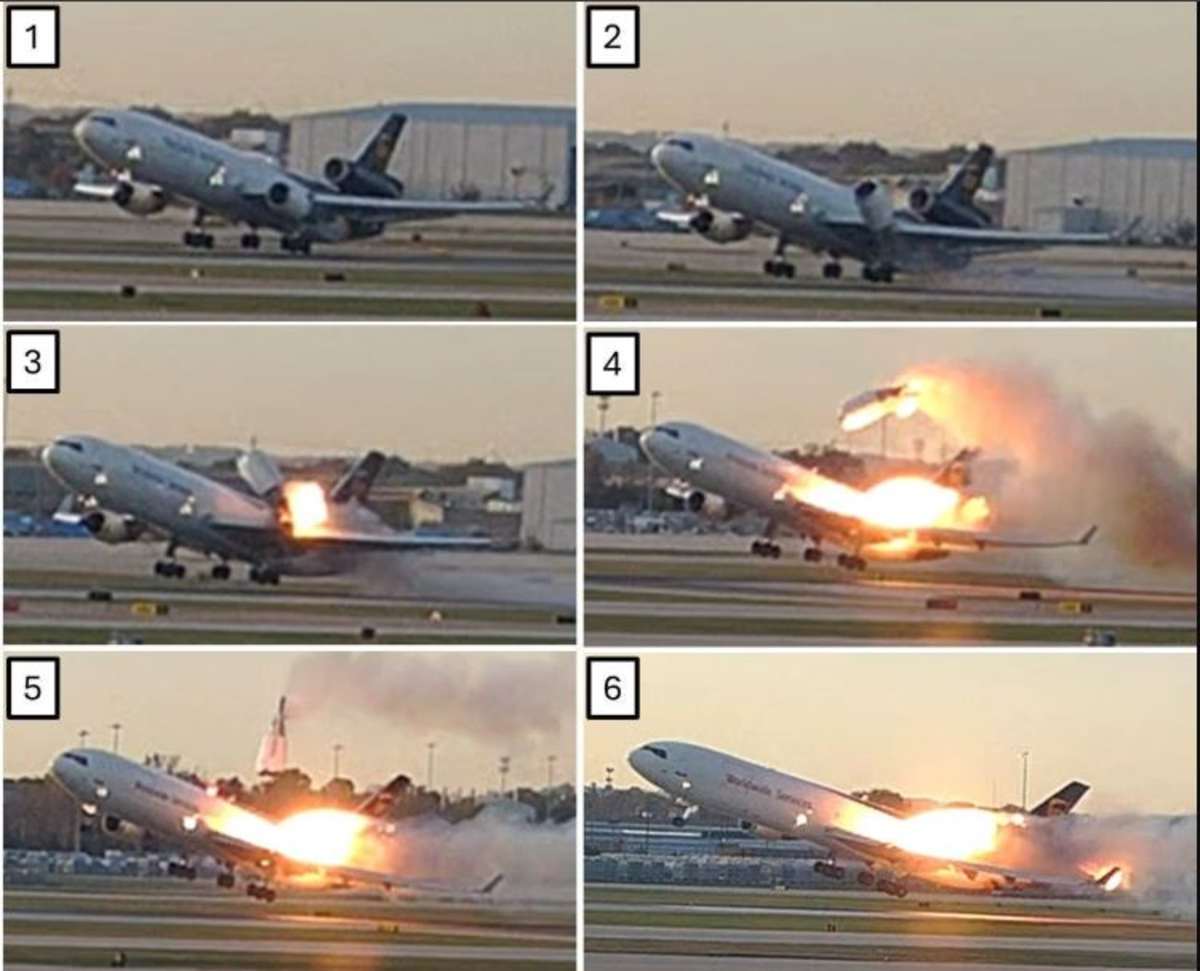UPS plane that crashed in Kentucky had cracks in engine mount, NTSB says

LOUISVILLE, KENTUCKY: A preliminary report reveals that a UPS cargo plane crash earlier this month that killed 14 people may have been caused by a failing engine mount.
The National Transportation Safety Board (NTSB) said on November 20 that the hardware holding the plane’s left engine showed signs of fatigue and “overstress failure.” UPS Flight 2976 burst into flames and crashed into an industrial area beyond the runway while taking off from Louisville Muhammad Ali International Airport on November 4.
What did the preliminary report claim?

The NTSB reported on November 20 that investigators “found evidence of fatigue cracks in addition to areas of overstress failure” in the left engine mount of the UPS plane. The report did not explain what caused the engine mount to crack.
According to the report, the hardware last underwent inspection in October 2021 and was not due for its next inspection for another 7,000 flights.
Federal authorities temporarily grounded all McDonnell Douglas MD-11 planes and nine similar models.
The three pilots of UPS Flight 2976 and 11 people on the ground died when the damaged jet created a half-mile-long debris field across a petroleum recycling facility and a UPS warehouse, triggering a massive fire and black smoke visible for miles.

Investigators confirmed that the 34-year-old plane was flown by experienced pilots and had passed several inspections. They also noted similarities to a 1979 crash that killed nearly 300 people after a plane’s left pylon and engine separated from its wing.
The NTSB will determine the probable cause and issue safety recommendations in its final report. “We continue to grieve for the lives lost in the tragic accident involving Flight 2976,” UPS said in a statement on November 20. The company added, “We appreciate the National Transportation Safety Board’s prompt release of preliminary findings and will fully support the investigation through its conclusion.”
NTSB releases frame-by-frame images of UPS crash

The National Transportation Safety Board (NTSB) released dramatic frame-by-frame images showing the left engine of the three-engine McDonnell Douglas MD-11F breaking away from the plane, rising above the wing, and igniting a fireball. Investigators captured six new images of this sequence.
NTSB investigators moved the cockpit voice recorder, engine, and pylon that fell off the wing to a secure facility for detailed examination. The cockpit voice recorder captured two hours and four minutes of clear audio, while the flight data recorder recorded 63 hours of data covering 24 flights, including the accident flight.
The NTSB deployed multiple specialists, including experts in air traffic control, human performance, and aircraft performance, to investigate the crash. UPS released a statement saying, “We appreciate the National Transportation Safety Board’s prompt release of preliminary findings and will fully support the investigation through its conclusion.”
Boeing, which merged with McDonnell Douglas years ago, added, “We continue to support the investigation led by the NTSB. Our deepest condolences go out to the families who lost loved ones and our thoughts remain with all those affected.”
The NTSB expects to release a final report in 18 to 24 months, outlining the probable causes of the crash. While the agency does not assign blame, it provides recommendations to improve aviation safety.










